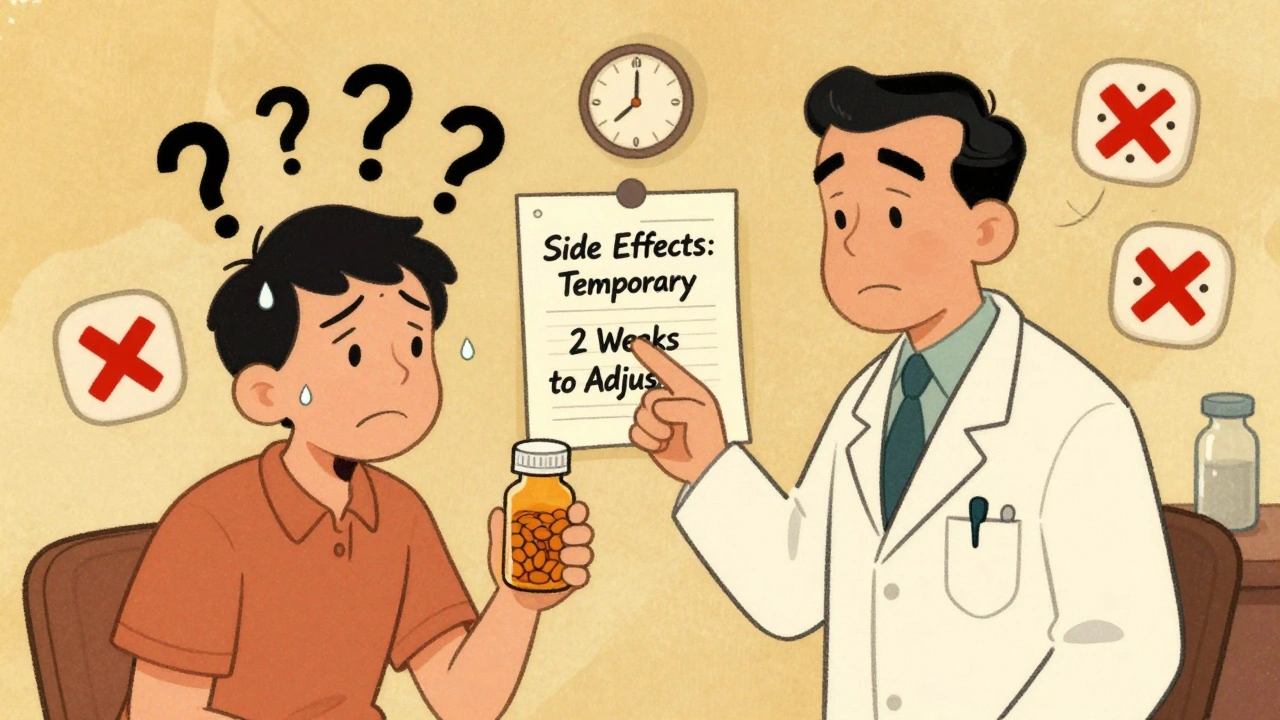Cymbalta Alternatives
When looking for Cymbalta alternatives, medications that can replace Cymbalta (duloxetine) for depression, anxiety, and chronic pain. Also known as duloxetine substitutes, this group gives patients a chance to find a better side‑effect profile, lower cost, or a fit for other health conditions.
To understand why you might switch, start with the original drug. Cymbalta, the brand name for duloxetine, an SNRI that boosts serotonin and norepinephrine levels. Its alternate name is duloxetine. While effective for many, Cymbalta can cause nausea, dry mouth, or insomnia, and not everyone tolerates it well.
Another key player is the broader class these meds belong to. SNRIs, serotonin‑norepinephrine reuptake inhibitors that treat mood disorders and pain. Common examples include venlafaxine and desvenlafaxine. Understanding the class helps you see where alternatives share mechanisms and where they diverge.
Beyond SNRIs, general antidepressants, a wide range of drugs used to lift mood and reduce anxiety provide additional options. SSRIs like sertraline, atypical agents such as bupropion, and even low‑dose tricyclics can fill the gap left by Cymbalta. Each class carries its own set of pros and cons—some are cheaper, others have fewer sexual side effects, and a few double as pain relievers.
When you weigh Cymbalta alternatives, three practical factors shape the decision: efficacy for your primary symptom (depression, anxiety, or pain), side‑effect tolerance, and cost or insurance coverage. For example, if nausea is your biggest complaint, a switch to venlafaxine may reduce that feeling but could raise blood pressure, so monitoring is essential. If cost is the main driver, generic duloxetine itself is often cheaper than the brand, yet many patients still find value in moving to a non‑SNRI like sertraline, which is widely covered.
How to Choose the Right Substitute
Start by listing what you need most: mood lift, pain relief, or a blend of both. Then check which alternative hits that target with the fewest unwanted effects. Talk to your prescriber about any existing conditions—heart disease, liver issues, or a history of seizures—because some alternatives have specific cautions. Lastly, consider lifestyle factors: dosing frequency (once daily vs. twice), food interactions, and the need for regular blood tests.
Below you’ll find a curated set of articles that break down each major alternative, compare side‑effect profiles, and give tips on safe switching. Whether you’re a newcomer to mental‑health meds or a seasoned patient looking for a tweak, this collection should give you the confidence to discuss the best option with your doctor.





